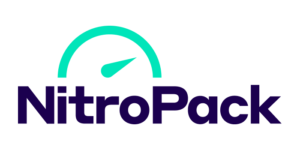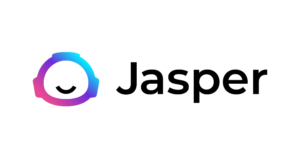Content marketing isn’t just for big companies; schools can use it, too.
Content marketing for schools is like telling the story of your school but in a way that’s interesting and fun. It’s not just about facts and figures; it’s about sharing what makes your school special. Think of it as your school’s diary, but one that everyone wants to read.
In this blog, I’m going to be your guide on this fun journey of content marketing strategy. We’ll talk about how to create awesome stuff that people in your school community will love and share.
Whether it’s cool posts on social media, a school newsletter that’s actually fun to read, or a video that makes everyone say Wow, we’ve got you covered. So, let’s turn the page and start this adventure in content marketing!
What is Content Marketing?

When we talk about content marketing, it’s like planting a garden that attracts the most beautiful butterflies – in this case, prospective students and website traffic to your school’s digital doorstep.
It’s a way of connecting with students and parents, not by telling them why your school is great, but by showing them through stories, information, and experiences that resonate.
Let’s dive into what content marketing really means for schools and how it differs from the old-school methods we’re used to.
Content Marketing and Its Relevance to Schools
Content marketing is all about crafting and offering useful content that’s tailored to your audience – in a school’s case, it’s the students, parents, and staff. It’s a vital part of your content strategy.
Unlike traditional ads that say, “Hey, look at us, we’re a great school,” content marketing is more like, “Here’s a story or a piece of information that you’ll find useful or interesting.”
It’s about creating content that speaks directly to the audience’s needs and interests, fostering a connection that’s both genuine and educational. For schools, this means sharing insights, successes, and experiences that highlight the unique aspects of your academic environment, making your school not just a choice but a community.
The Difference Between Traditional Ads and Content Marketing

Now, how does this differ from traditional marketing? Think of traditional marketing like a billboard you see on the highway – it’s there, it’s loud, and it’s trying to grab your attention. Still, it’s not really engaging with you.
Content marketing, on the other hand, is like a conversation at your favorite coffee shop. It’s engaging, relevant, and adds value to your day.
One of the key differences lies in search engine optimization (SEO). Traditional marketing doesn’t necessarily consider how people search for schools online, but content marketing thrives on it.
By using SEO, schools can create content that’s not only interesting but also easy to find on search engines. This means when a prospective student or parent is looking for information, your school’s content comes up, providing them with helpful information and drawing them to your website.
It’s a more organic and efficient way to build a reliable relationship with your audience.
How to Set Objectives for Your School’s Content Marketing

When we talk about content marketing for schools, especially independent schools, it’s like setting out on a treasure hunt. You need a map, which, in this case, is your objective.
These objectives guide you through the dense forest of information to find the treasure – engagement, and recognition. Let’s explore how identifying your target audience and setting specific goals can make your journey successful.
1. Identify Target Audiences
The first step in your content marketing adventure is to identify your target market. For schools, this includes students, prospective parents, and staff. Each of these groups is unique, with different interests and needs.
It’s like trying to host a party that appeals to everyone, from kindergartners to grandparents! Understanding your audience helps in crafting a school’s brand message that resonates with each group.
For instance, prospective parents might be interested in academic excellence and extracurricular opportunities. At the same time, students might be more engaged with stories about campus life and student achievements.
By targeting your content specifically, you’re speaking directly to each segment of your audience, making your school’s message more relevant and compelling.
2. Set Specific, Measurable Goals for Content Marketing Efforts
Now, onto setting specific and measurable goals. This isn’t just about saying, “We want to be the best!” It’s more like, “We want our website to rank higher in search engine results for these relevant keywords, or we want to increase our engagement with prospective parents by 20% in the next six months.”
These goals give you something real and tangible to aim for. It’s like saying, “We want to find the X on the treasure map.” When you have clear, measurable goals, it’s easier to fix your efforts and measure your success.
By aiming to improve search engine rankings with relevant content or to increase interaction with a specific group, you’re not just throwing messages out into the world and hoping for the best. You’re making calculated moves that are likely to bring real results for your school’s content marketing efforts.
Content Types and Channels

In the world of content marketing for schools, variety is the spice of life. Just like a school cafeteria offers different food options to cater to everyone, your content marketing strategy needs a mix of content types to engage your audience effectively.
Let’s delve into the diverse types of content that can spice up your digital marketing efforts and the channels best suited for distributing this content.
Overview of Different Types of Content
When we think about the types of content to include in our strategy, the options are as diverse and exciting as a school talent show.
-
Blogs: These are like the essays of the digital world – informative, engaging, and great for sharing detailed insights and stories. Blogs can boost your website’s visibility and establish your school’s expertise on various topics.
-
Newsletters: Think of newsletters as your school’s regular news bulletin. They are perfect for keeping your community updated on school events, achievements, and announcements.
-
Social Media Posts: These are the quick, catchy updates and snapshots of school life. They are like the hallway conversations of the digital world, perfect for instant engagement and sharing bite-sized content.
-
Videos: Videos are the school assemblies of your digital content. They provide a dynamic way to showcase school events, student projects, and teacher insights, making your content visually engaging and easy to digest.
Choosing the Right Channels for Content Distribution
Selecting the right channels for distributing content is like choosing the right classroom for each subject. You need to match the content type to the channel where it will be most effective.
-
School Website: This is your digital campus. It’s where you host detailed content like blogs and newsletters. Your website acts as a central hub for information, attracting prospective parents and students who are looking for in-depth information about your school.
-
Social Media Platforms: Social media accounts are the school’s bulletin boards, perfect for quick updates, photos, and interacting with your community in real-time. They are excellent for increasing visibility and engagement, especially during events like parent-teacher conferences or school plays.
-
Email: Email is like sending home a letter in a student’s backpack. It’s direct, personal, and effective for reaching parents and staff with important updates, newsletters, and personalized communications.
How to Develop a Content Calendar

Imagine a content calendar as your school’s yearly planner. Still, instead of just listing holidays and exam dates, it’s filled with your content strategy.
This calendar is a crucial tool in content marketing for schools, helping you organize and schedule posts and updates to engage with potential students and the school community. It’s like having a map for your digital journey, ensuring you’re always on track and never miss an important date or event.
1. Plan and Schedule Content
Creating a content calendar is like setting up a school timetable. You decide what subjects (or content types) to cover and when. This organization helps maintain a consistent and balanced flow of information.
You wouldn’t want to bombard your audience with too much at once, just like you wouldn’t schedule all the major exams on the same day. A well-planned calendar ensures that your audience receives a variety of content types at a steady, manageable pace.
2. Tailor Content to School Events and Academic Calendar
Your content calendar should align with your school’s academic calendar and events. This synchronization helps in creating relevant and timely content.
For instance, as back-to-school season approaches, your content could focus on preparation tips, school introductions for new students, and welcome messages.
This alignment not only keeps your content strategy focused but also ensures that you’re providing valuable and engaging content at the most reasonable times.
3. Engage Potential Students with Timely Content
For potential students, a content calendar ensures that they receive the right information at the right time. If it’s admission season, your content could include application tips, student testimonials, and virtual tours of the school.
This strategic timing of content plays a vital role in attracting new students by providing them with the information they need exactly when they need it.
By developing a content calendar, you ensure that your school’s digital presence is not only well-organized but also dynamic and responsive to the needs of your audience. It’s like having a well-oiled machine that keeps your content marketing strategy running smoothly and effectively throughout the year.
How to Create Engaging and Educational Content
In the realm of content marketing for schools, crafting content is similar to being the teacher who makes learning both enjoyable and enlightening.
Your goal is to create content that not only engages but also educates, and this approach is particularly crucial when targeting prospective students. It’s like designing captivating lessons that students look forward to attending.
So, how do you make your content both fun and informative?
Engaging content is like a magnet that pulls your audience in and for prospective students. It’s all about making them excited about your school.
While it’s essential to provide valuable information about your school, it’s equally vital to do so in an engaging way. Think of it as adding a sprinkle of excitement to your content.
Creating content that resonates with prospective students isn’t just about bombarding them with facts and figures. It’s about weaving a narrative that sparks their curiosity and fuels their desire to learn more. It’s a delicate dance between education and engagement.
How to Measure Success and Adjust Strategies

In the world of content marketing for schools, it’s not enough to simply create and distribute content. You need to know if your efforts are paying off, and if they aren’t, you need to be ready to adapt and evolve.
It’s like being a teacher who regularly evaluates their teaching methods to ensure their students are learning and growing.
So, to walk this terrain successfully, you need to understand the basic metrics and analytics that can help you track your content’s performance in the education industry, much like how Google’s search results help you find what you’re looking for.
Basic Metrics and Analytics To Help Track Content Performance
Metrics and analytics may sound daunting, but they are like report cards for your content – they tell you how well it’s performing.
Just as a teacher uses grades to assess a student’s progress, these metrics help you assess how your content is doing.
It’s like gaining insight into the minds of your students to tailor your teaching methods for better results.
We’ll break down these metrics into simple terms so you can easily understand how to measure the success of your content.
-
Website Traffic: This is like counting how many students enter your classroom. It tells you how many people visit your website.
-
Page Views: Think of this as the number of times students turn the pages of their textbooks. It shows how many times your web pages have been viewed.
-
Bounce Rate: Imagine students walking into your classroom and immediately leaving. The bounce rate is similar; it tells you the percentage of people who leave your website after viewing just one page.
-
Time on Page: This is like measuring how long students stay engaged in a particular topic in class. It tells you how much time visitors spend on a page.
-
Conversion Rate: Think of this as students who raise their hands to ask questions in class. It’s the percentage of visitors who take a desired action, like signing up for a newsletter or contacting your school.
-
Click-Through Rate (CTR): Imagine handing out flyers in school and counting how many students actually read them. CTR is similar; it measures the percentage of people who click on a link in your content.
Tips on How to Adjust Strategies Based on Feedback and Data
Once you have the metrics and analytics in hand, the next step is to use them to your advantage. It’s like when a student receives feedback on their work – it’s an opportunity to improve. Let us dive into the practical tips.
-
Analyze Your Most Popular Content: Look at which pages or blog posts get the most traffic and engagement. This is like finding out which lessons students enjoy the most. Focus on creating more content similar to what’s popular.
-
Identify High Bounce Rate Pages: If certain pages have a high bounce rate, it’s like students leaving class quickly. Investigate why people are leaving and make improvements to keep them engaged.
-
Optimize for Mobile: Ensure your website and content are mobile-friendly. Just like students use smartphones, many users access content on mobile devices. If your site isn’t mobile-responsive, you could be losing potential students and parents.
-
Use A/B Testing: Experiment with different content formats, headlines, and calls to action (CTAs) to see what works best. It’s like trying different teaching methods to see which one resonates with students.
-
Engage with Feedback: If visitors leave comments or send messages, respond to them promptly. It’s like addressing students’ questions in class. This shows you’re attentive and willing to provide assistance.
-
Stay Updated with Industry Trends: Keep an eye on the latest trends in the education industry and adapt your content accordingly. Just as teachers update their curriculum, staying current ensures your content remains relevant.
-
Regularly Review and Adjust: Content marketing is an ongoing process. Regularly review your metrics, adjust your strategies, and try new approaches. It’s like refining your teaching methods each semester based on student performance.
Conclusion

In the growing world of education, content marketing for schools emerges as an example of innovation and engagement. Like an educational thought leader, you now possess the knowledge and tools to explore this dynamic field.
You understand that content marketing is not just about promoting your school; it’s about building connections, telling stories, and delivering value to your audience. Just as a great teacher inspires students to learn, your content can inspire prospective students and parents to choose your school.
It’s about crafting a narrative that speaks to the heart of your educational institution and resonates with those seeking knowledge and growth. So, as you get on your content marketing journey for schools, remember that every blog post, social media update, or video can be a powerful tool for creating a brighter, more informed future for your school and its community.





















